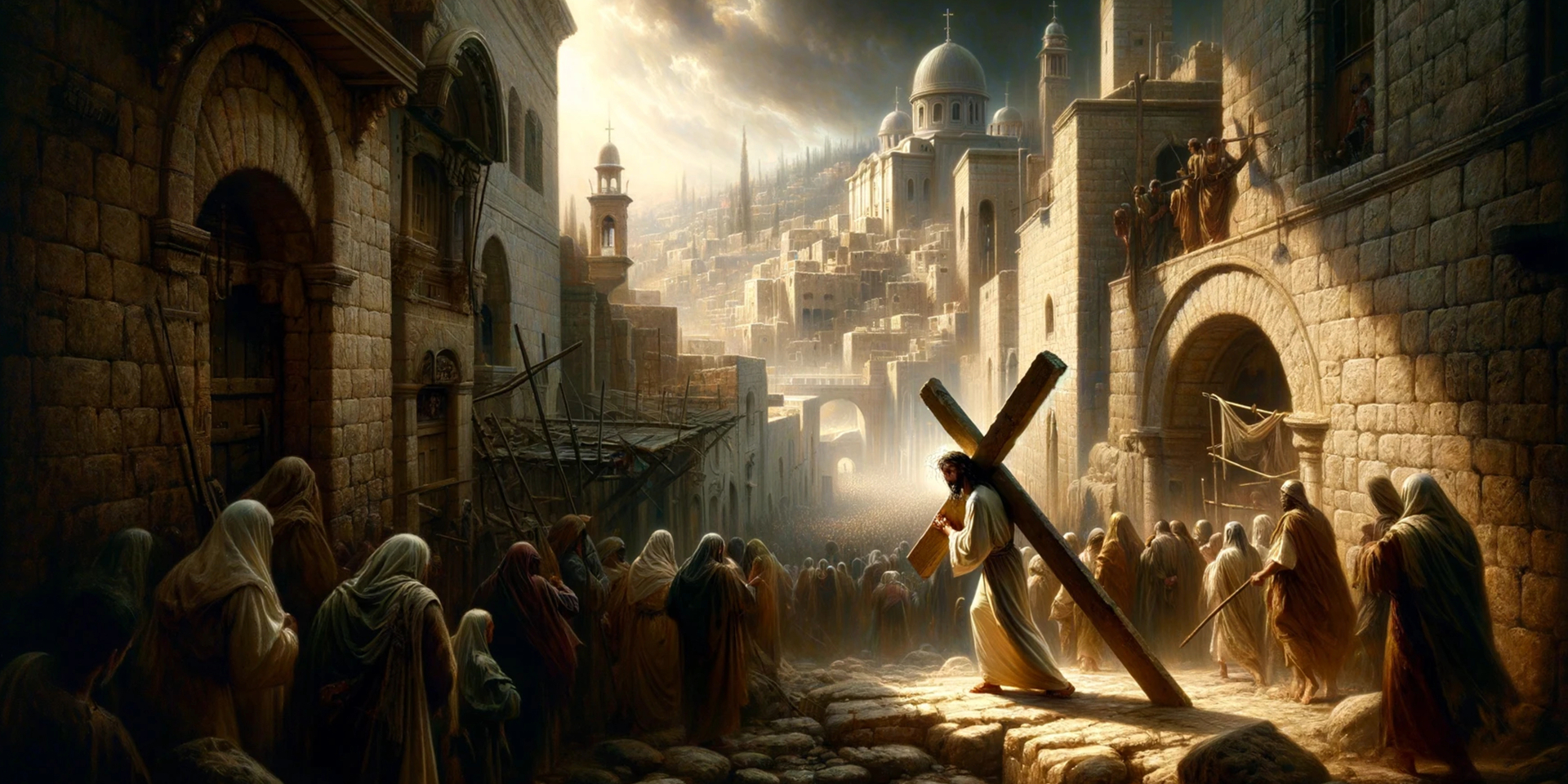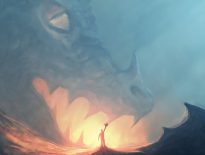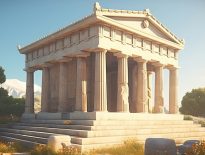It is the spring of A.D. 31, halfway through the 70th prophetic week of Daniel 9:24. This passage from the book of Daniel predicts that between the command to build the city of Jerusalem—in the autumn of 457 B.C.—and the appearance of the Anointed One (the Messiah), 69 prophetic weeks or 483 years (a prophetic day corresponding to a calendar year, according to the principle of “a day for every year” in Ezekiel 4:6) will elapse.
The Messiah appeared in public at His baptism in A.D. 27, at the end of the 69 weeks mentioned. The prophet Daniel predicted that in the middle of the 70th week “the Anointed One will be put to death and will have nothing”, indicating that Jesus would be killed after three and a half years of public ministry, but would rise again (Daniel 9:25). In the spring of the 31st year the time was drawing near. The clock was ticking!
The first day of Passion Week
Apart from the miraculous feeding of the 5,000 men, the triumphal entry into Jerusalem is the only event reported by all four Evangelists. While John views the event in terms of its impact on the disciples, Matthew emphasises the reaction of the crowd, identifies Jesus as the Messiah and keeps the story in the temple area to emphasise the authority of Jesus over Judaism. Mark recounts the events in the style of a narrator, while Luke focuses on the Saviour’s state of mind.
Jesus sent two of his disciples to Bethphage to bring him a donkey. According to a custom called “angaria”, an important religious figure could borrow a transport animal for a period of time. When the disciples were asked why they were untying the donkey, they replied that the Lord needed it (Luke 19:34). The Son of God, the Creator and Owner of all things, was borrowing what was rightfully His!
From Galilee to Bethany, three kilometres from Jerusalem, Jesus had walked. Although the tradition was that one had to enter Jerusalem on foot for the Passover, Jesus chose to go on horseback for the last part of the journey. The natural question is: Why? What message did He want to convey? Surely the gesture drew attention to the words of Zechariah, who had prophesied that the King would enter Zion humbly, riding on a donkey’s foal, and with thoughts of peace (Zechariah 9:9-10). Jesus was the King of Peace.
Jews from all over the land and the diaspora came to Jerusalem for the Passover. Jesus chose the time when almost all the Jews would be in Jerusalem. Whereas He had previously forbidden any affirmation of His Messiahship, He now seemed to be encouraging it, because everyone’s attention needed to be focused on Him. The events of the last week were to be watched by all, for His atoning death was for all.
The whole procession was on its way to Jerusalem to enter through the East Gate. It is quite possible that on the same day another procession was seen at the West Gate of the city. Probably the most important figure was on a majestic horse, and the retinue consisted of well-armed soldiers in polished armour. This was the governor’s guard. Pilate lived during the year in Caesarea Maritima, west of Jerusalem on the Mediterranean. At Passover, however, the Roman garrison in Jerusalem was to be reinforced and Governor Pilate was to be present in Jerusalem to prevent any possible uprising.
The cry of contrasts: the city of God
In the landscape of the Holy Land, Jerusalem is situated at a higher altitude. Between Jericho and Jerusalem, for example, there is a difference in altitude of 1000 metres. As pilgrims ascended to Jerusalem, it was customary to sing excerpts from the collection of psalms called the Song of Ascents or Hymns of the Steps (Psalms 120-134). These psalms evoked the joy of entering the Holy City and the “House of God”: “I rejoiced with those who said to me, ‘Let us go to the house of the Lord'” (Psalm 122:1).
However, the “holy city” also had unholy connotations. After the death of King David, Jerusalem had become the centre of a “system of domination” characterised by political oppression, economic exploitation, and religious justification. The people were told that the king ruled by divine right, as “the son of God,” and that the social order was a reflection of God’s will. This is the same pattern found later in most pre-modern agrarian societies, where religion was used to legitimise the position of the rich and powerful on the social ladder. Jerusalem was also a concentration of wealth. During Solomon’s reign, the Holy City had become a treasure trove of material resources, and Solomon himself had become a new Pharaoh, this time in Israel.
Micah, a prophet of the 8th century B.C., asked: “What is Judah’s high place?” (a ‘high place’ refers to a place of pagan worship). His surprising answer comes in the form of a rhetorical question: “Is not Jerusalem?” (Micah 1:5). What a strange answer: the sin of Judah was a city, the very city of God. The prophet’s explanation is added in the same chapter: “They do not defend the cause of the fatherless; the widow’s case does not come before them.”
Jerusalem was also the centre of religious worship through the rituals of the Temple. The actions of both John the Baptist and Jesus had an anti-religious overtone. John the Baptist preached baptism for the forgiveness of sins. Forgiveness, however, was the preserve of the temple because it was believed that forgiveness could only be obtained through sacrifice in the temple. Jesus went further by offering forgiveness outside the temple sacrifice (Mark 2:3-12).
The great Jewish revolt of A.D. 66 was directed against both Rome and its collaborators: the priests, Pharisees, and Sadducees. When the rebellious Zealots took over the Temple, they replaced the King of Peace.
In times of peace, the rulers rode on donkeys. This was a sign of their humble service to the people. The tradition goes back to the time of Solomon, who rode King David’s donkey to the River Gihon to be crowned (1 Kings 1:33, 38). Jesus came as a servant. In times of war or victory, the king would enter the city on horseback. The Bible proclaims that Jesus will return to the Mount of Olives, this time on horseback (Zechariah 14:4; Revelation 19:11)!
If a king riding a donkey in peacetime signified service, the use of a colt that had not been ridden before also had religious significance. Only animals that had not been used for work could be used for a sacred purpose (Numbers 19:2; Deuteronomy 21:3; 1 Samuel 6:7; 2 Samuel 6:3). Even after the completion of the sacred mission, these animals were not used as beasts of burden. The donkey and the colt were also a sign of royalty. Patriarch Jacob prophesied that his son Judah would be ruler in Israel until the coming of the Messiah (Shiloh), the Giver of Rest, and that his prosperity would be so great that he would “tether his donkey to a vine, his colt to the choicest branch” as if it were an ordinary piece of wood.
When Jesus entered Jerusalem, the crowd greeted Him by throwing their cloaks on the ground in front of Him. The gesture of throwing their clothes in the path of the donkey was a gesture of submission to a king, a gesture of esteem and respect. When Jehu was anointed king, the subjects threw their garments in his way (2 Kings 9:13). Rabbinic literature provides several other examples. The historian Plutarch recalls that when Cato Minor left his troops, the people laid their clothes at his feet. When Simon Maccabeus entered Jerusalem in triumph, he was greeted with palm branches and music. But the clothes strewn in Jesus’s way were ceremonial clothes!
Contrasts
On the top of the Mount of Olives, to the cheers of the crowd, Jesus paused and a shadow fell on His face. With tears in His eyes He said: “Jerusalem, Jerusalem, you who kill the prophets and stone those sent to you, how often I have longed to gather your children together, as a hen gathers her chicks under her wings, and you were not willing” (Matthew 23:37) This was a reference to the fact that Jesus had come to Jerusalem several times, but each time He had been received with coldness. Although the mission of Jesus was to offer grace, in the prophetic vision evoked on the Mount of Olives He referred to judgement: of the temple, of the city, and of the people. The contrast is between peace and justice!
The crowd at the Temple, made up of pilgrims who had come from all over for the Passover, disregarded the evening sacrifice and went to meet the Messiah. They joined the crowd of disciples and cheered Jesus while the Jerusalemites remained silent. The leaders of the nation were waiting for a king, but not one who would bring peace to their souls, but one who would free them from the Roman bondage. They wanted a political Messiah. But Jesus was a liberator for all ages. His contemporaries could not see beyond the Roman occupation, but Jesus saw the pain of a world trapped in sin. His concern was not to free people from a foreign rule, but to free them from their own corrupt nature. He refused to be a local deity, a kind of idol of the house, village or town, a patron saint as some towns have today.
The blind man of Jericho, recently healed, had recognised the true identity of Jesus, but the rulers and inhabitants of Jerusalem were blind to His nature and mission. The Jewish leaders asked Jesus to silence His disciples, but Jesus replied, “If they keep quiet, the stones will cry out.” The lifeless creation would know what to cry out! Spiritual leaders didn’t realise what was going on and didn’t understand. In another contrast, the crowds cheered Him like a king, but five days later they cried, “Crucify Him!”
Arriving on the crest of the Mount of Olives, where the panorama of the city opened up, Jesus broke into an incomprehensible weeping for the City of Peace, for Jerusalem, which had not accepted the truths that could bring it peace. The cheering died away like fireworks. Joy mixed with weeping. The crowd dispersed, probably disappointed by the cancellation of the coronation. Jesus “entered Jerusalem and went into the temple courts. He looked around at everything, but since it was already late, he went out to Bethany with the Twelve” (Mark 11:11).
The meanings of entering Jerusalem
The entry into the Holy City was first and foremost a declaration to the Jews and to the whole world that He, Jesus, was the Promised One, the One sent by God, the Messiah. Commentator Peter Pett identifies in this episode, as recounted in Luke (19:29-44), a chiastic structure, that is, a literary structure that promotes “mirror” parallelism and, like a mountain, has two slopes and a peak. The chiasmus begins in Luke 19:29 and ends in Luke 21:36. Thus the first section (Luke 19:29-40) tells how, after the initial preparations, Jesus rides triumphantly into Jerusalem on a donkey and reveals Himself as the Messianic King of His people and of all humanity. In the parallel passage (Luke 21:36) there is a hint of the King’s triumphal return to our world… In the middle of this chiastic fragment is the section to which Luke wants to draw the reader’s attention (Luke 20:9-18). Through the parable of the vine, Jesus reveals His unique nature as the Son of God and His role as a cornerstone, the one who has supreme authority. In the same passage Jesus also exposes the hypocrisy of the Jewish leadership, that is, His opponents, who will stumble over this stone. In essence, the passage in Luke 20:9-18 restates the truth that Jesus is the only Son of God.
Secondly, the episode offers a shattering insight into what was going on in the soul of Jesus. He was not a kamikaze warrior programmed to sacrifice Himself at a moment’s notice, but God turned human, conditioned by love for the only rebellious planet in the universe—a pure, ancestral, paternal love, from before conception.
Thirdly, the episode of the triumphal entry of Jesus into Jerusalem offers a stark picture of the religion of forms and rituals, behind which lie insincere and blind human interests: “‘Teacher! Rebuke your disciples!’ To which He replied, ‘If they keep quiet, the stones will cry out'” (Luke 19:39-40). The natural world and human nature: the ultimate contrast!














